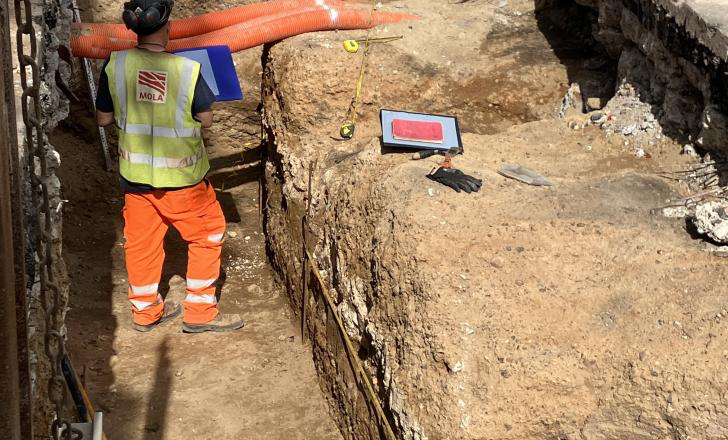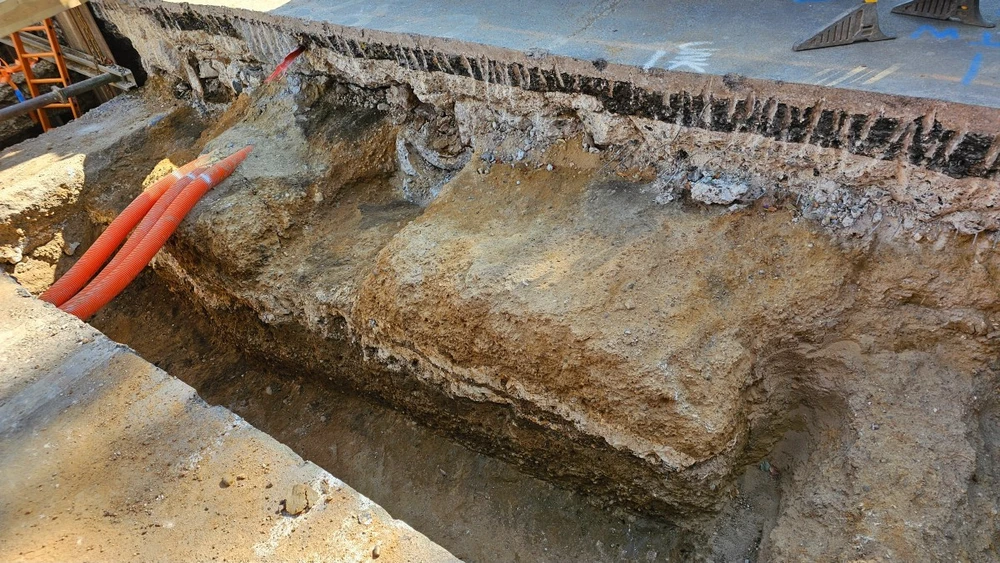A groundbreaking archaeological discovery has brought to light a remarkably well-preserved section of Watling Street, an ancient Roman road, hidden beneath the bustling modern Old Kent Road in Southwark, southeast London. This discovery provides fascinating insights into Roman engineering and its lasting impact on Britain’s urban landscape.
What is Watling Street?
Watling Street was one of the most significant Roman roads in Britain, constructed shortly after the Roman invasion in CE 43. It served as a major artery, connecting the Kent coast to Londinium (modern London) and extending to key Roman settlements such as Verulamium (St Albans) and Deva Victrix (Chester).
This road played a critical role in the expansion of Roman influence, facilitating trade, military logistics, and administration. Its strategic importance made it a backbone of Roman Britain’s transport network.
Details of the Discovery
Archaeologists unearthed a section of Watling Street beneath Old Kent Road, a contemporary route that closely follows the Roman alignment. The uncovered section measures:
- Width: 5.8 meters (19 feet)
- Height: 1.4 meters (5 feet)
Construction Details
The road showcases the Romans’ sophisticated engineering techniques, featuring a layered structure designed for durability:
- Foundation: A compacted gravel base, ensuring stability.
- Middle Layers: Two layers of chalk, providing additional strength and resilience.
- Surface: A final layer of compacted sand and gravel, creating a smooth, weather-resistant surface.
This design reflects the Romans’ understanding of construction suited for heavy traffic and varied weather conditions, demonstrating their foresight in infrastructure development.

The Significance of the Discovery
A Window into Roman Britain
This discovery offers a rare and tangible connection to Britain’s Roman past. While many ancient roads have been lost or heavily modified by subsequent urban development, the preservation of this section is extraordinary. It reveals how deeply Roman infrastructure shaped Britain’s geography and settlement patterns.
Engineering Excellence
The road’s layered construction highlights the Romans’ advanced engineering methods, many of which influenced later road-building practices in Britain. Their techniques ensured durability, enabling their roads to remain functional for centuries.
Alignment with Modern Roads
The direct alignment of Old Kent Road with the ancient Watling Street underscores the Romans’ lasting influence on modern transport routes. Many of Britain’s key roads still follow Roman paths, demonstrating the enduring practicality of their designs.
Implications for Archaeology and Urban Planning
This discovery is significant not only for archaeologists but also for urban planners and historians. It offers an opportunity to study:
- Roman adaptation to local conditions: How the Romans used local materials and responded to Britain’s unique environment.
- Impact on modern infrastructure: How Roman roads influenced subsequent urban development.
- Preservation challenges: How ancient artifacts can be protected in heavily urbanized areas.
The well-preserved state of the road also raises questions about other hidden Roman sites that may lie beneath London’s modern streets, awaiting discovery.

A Legacy of Roman Engineering
The uncovering of Watling Street is a reminder of the profound legacy left by the Romans in Britain. Their infrastructure not only connected distant parts of the empire but also laid the groundwork for the development of future cities and road systems. This find invites further exploration into how ancient innovations continue to shape the modern world.
As archaeologists continue their study, this discovery promises to deepen our understanding of Roman Britain, its people, and the enduring marks they left on the landscape.
